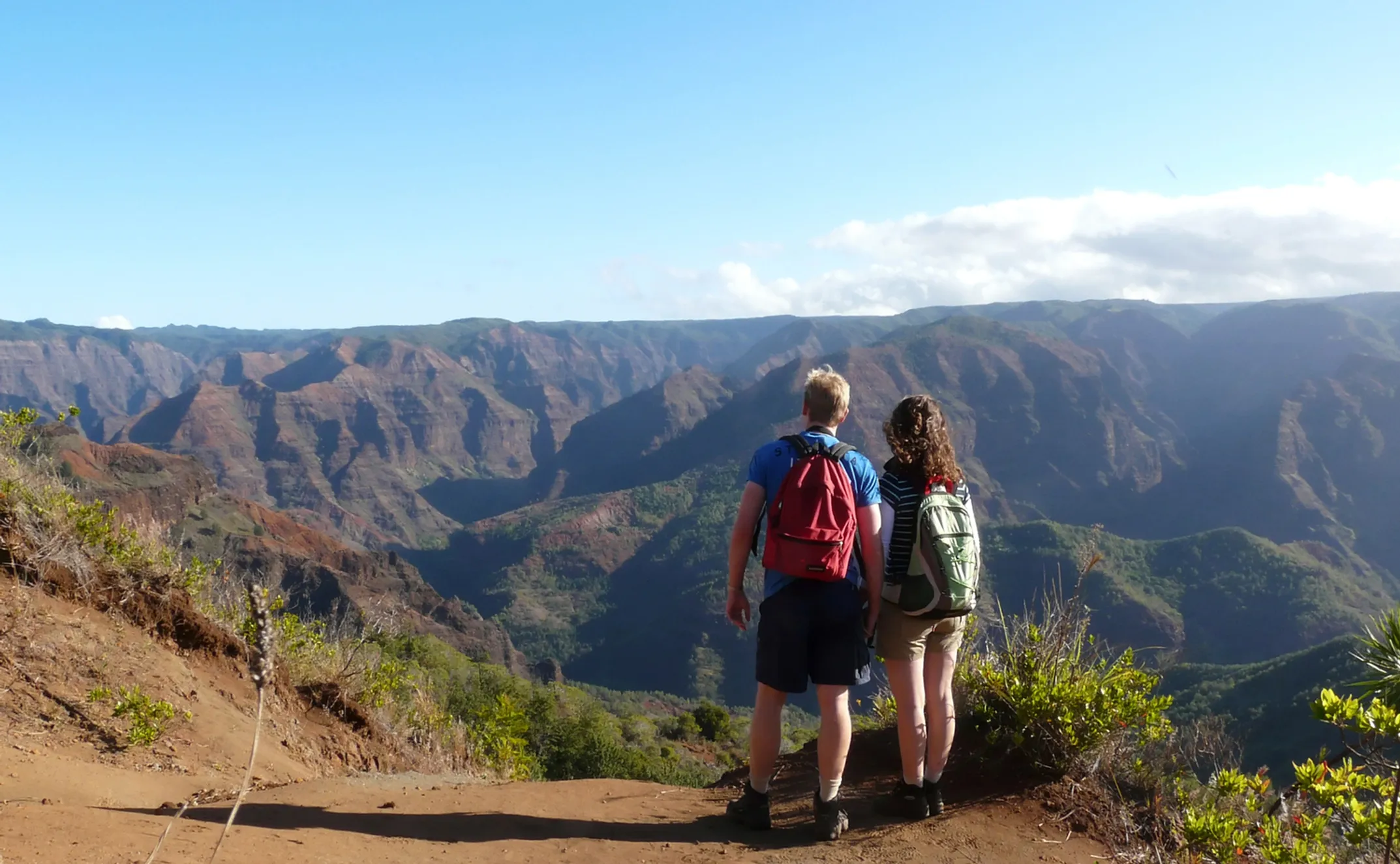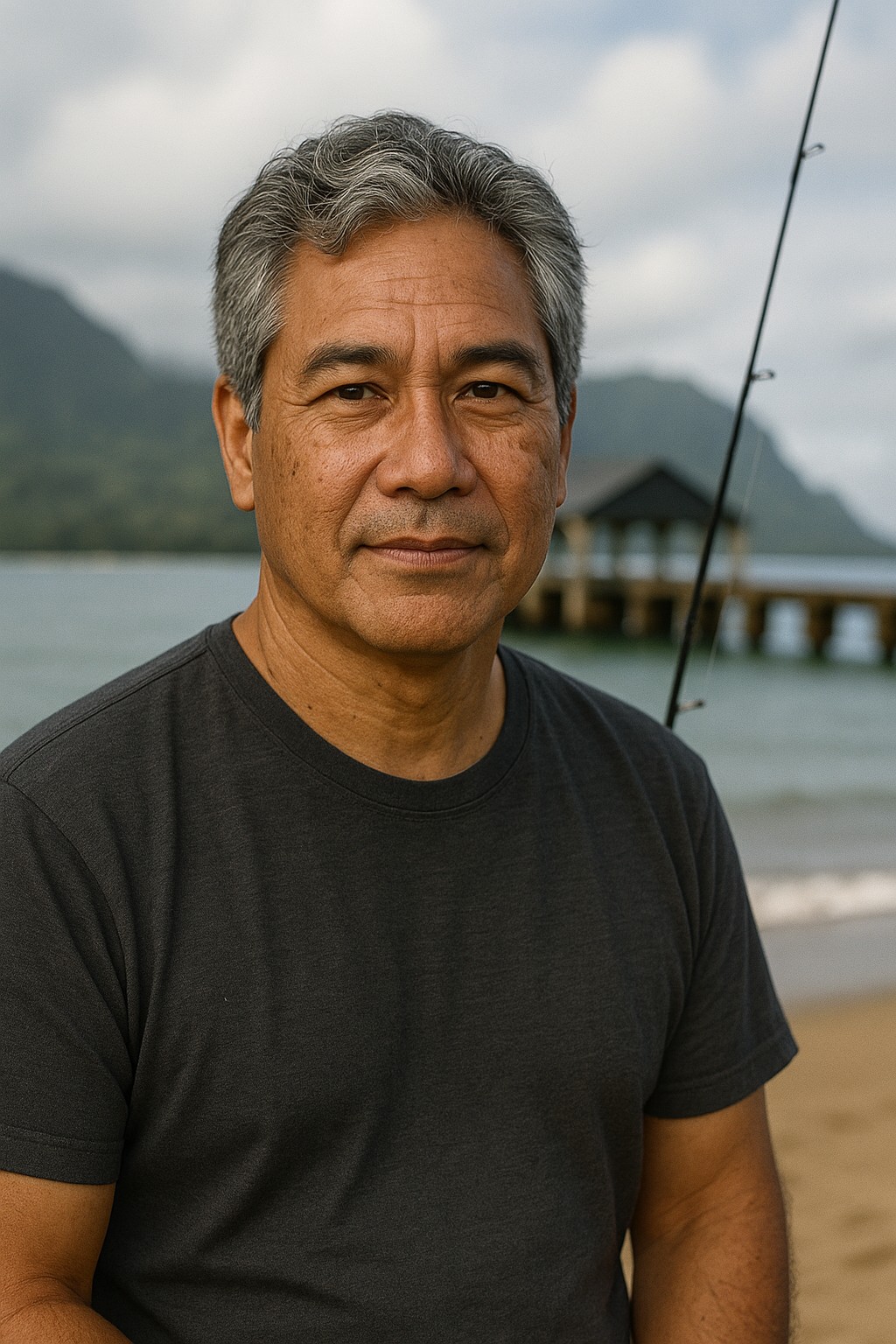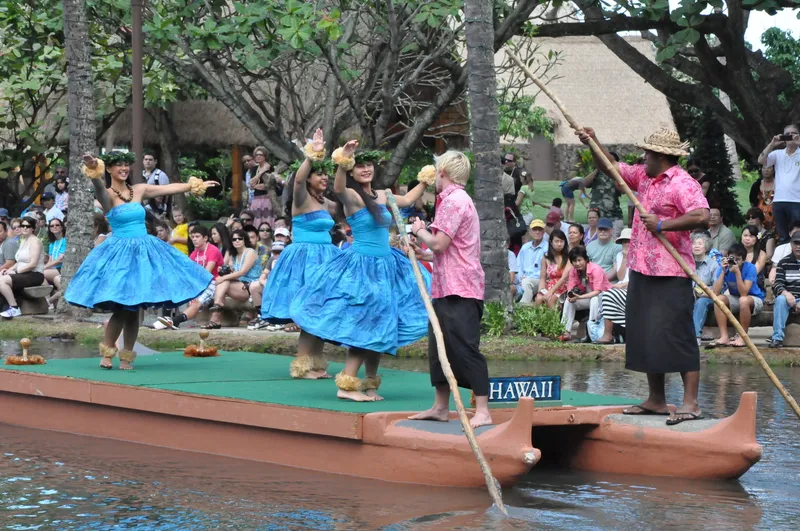

From Kapa to Kakaʻako: Hawaiian Art
Journey into the unbroken soul of Hawaiian art - a living narrative of identity, resistance, and resilience

Written by a Cultural Expert
Kalani MillerWhere Art Begins: In Sacred Talk with the Land
The sun sits low. Long shadows stretch across hardened lava. Here at Puʻu Loa in Hawaiʻi Volcanoes National Park, only wind whispers across a silent library. Before me, etched into dark, glossy earth, are thousands of stories. These are the kiʻi pōhaku, the petroglyphs. This is where my journey begins.
I came to the islands of my ancestors to understand Hawaiian art. I learned it doesn't start in a gallery or museum. It starts here, in a sacred talk with the land itself.
Over the weeks that followed, I found this talk has never stopped. It simply changed its language. The same drive that pushed ancient hands to carve family history into volcanic rock now guides fingers of a master weaver. It moves the steady hand of a kapa maker. It powers the bold spray of a street artist's can.
This is the story of that find. A journey into the unbroken soul of Hawaiian art. An art form that is more than decoration. It is a statement of identity. An act of strength. A proof of a spirit that will not be quiet.

Understanding the Living Foundations
To truly grasp the art of Hawaiʻi, you must first understand its source. It is born from the ʻāina (land). Crafted from native materials with great physical effort. Filled with a spiritual view. These basic, pre-contact art forms are not artifacts of a past era. They are the living roots from which all modern Hawaiian art continues to draw its strength and meaning.
🗿 Kiʻi Pōhaku (Petroglyphs)
The first storytellers of Hawaiʻi - over 23,000 rock images carved into volcanic stone, preserving ancient narratives.
🌿 Kapa (Bark Cloth)
Sacred cloth beaten from wauke bark - a rhythmic art form that creates both sound and sanctuary.
🪶 Nā Hulu Aliʻi (Featherwork)
Divine garments of royalty - cloaks woven with hundreds of thousands of sacred feathers, embodying mana.
🪵 Kālai (Wood Carving)
Sacred vessels for divine presence - kiʻi guardians that bridge the material and spiritual worlds.
Explore the Living Art of Hawaiʻi
From ancient foundations to modern expressions, discover how Hawaiian art continues to evolve while honoring its sacred roots.
ℹ️ Art Guide Info
- Time Period: Ancient to Modern
- Art Forms: 15+ Traditions
- Workshop Cost: $45-$150
- Skill Level: All Welcome
- Cultural Impact: Profound
🎨 Featured Artists
- Dalani Tanahy Kapa Master
- Marques Hanalei Marzan Fiber Arts
- Lehuauakea Cultural Identity
- Kamea Hadar Street Art
🏛️ Key Locations
Featherwork collection
23,000+ rock images
Modern street art
Contemporary workshops
More Than Art: A Statement of Identity
Hawaiian art is not merely aesthetic expression—it is a profound statement of identity, an act of cultural sovereignty, and a proof of a spirit that refuses to be silenced. From the ancient petroglyphs that mark presence on the land to the contemporary murals that reclaim urban space, each work carries the weight of ancestral knowledge and the urgency of modern resistance.
Living Tradition
These art forms are not museum pieces—they're living practices passed down through generations and constantly evolving.
Cultural Resistance
Art becomes a powerful tool for cultural reclamation, identity assertion, and political expression.
Sacred Connection
Every piece maintains a deep spiritual connection to the ʻāina (land) and ancestral wisdom.
"This is art as an act of aloha ʻāina—love for the land."
A visual language used to articulate ongoing struggles for ea (sovereignty, life, breath), protest the desecration of sacred sites, and heal from the wounds of colonization.

